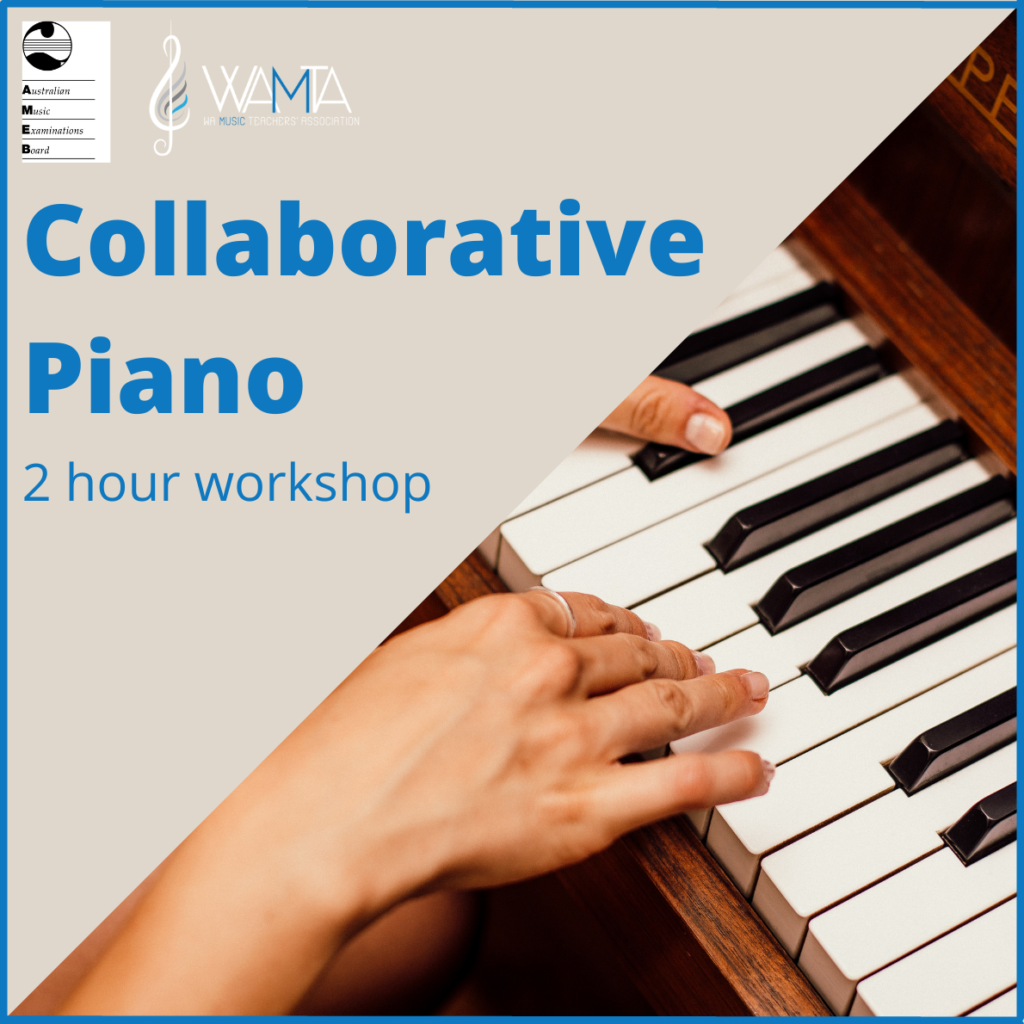
Learn about how to use the Collaborative Piano Syllabus with AMEB examiners Adam Pinto and Gaby Gunders.
Topics in the Collaborative Piano workshop include:
- What is the Collaborative Piano Syllabus and why has it been introduced?
- Why would our students benefit from playing Collaborative Piano?
- How is Collaborative Piano playing different from solo?
- How to develop Collaborative Piano skills in a student
- Which pieces can we use?
- Who can play the collaborative part?
- What will the examiner be looking for?
Purchase / Access the Recording of this Workshop
WAMTA and the AMEB (WA) presented a two hour workshop on 28th October 2021 via a discussion on how to use the Collaborative Piano Syllabus. This is the recording of that workshop.
Australian Music Teachers Association members receive a discount on recording purchases - WAMTA members please log in to view the discount code to apply at check out.
After you have watched this recording: Request a PD certificate.
Testimonials for this Workshop
This two hour workshop presented by Adam Pinto and Gaby Gunders was held at Zenith Music Auditorium on 28th October 2021.
Adam Pinto presented the first hour of the workshop where he talked about the collaborative syllabus for Level 2, Grades 5&6 where one work is substituted for a Piano Duet and then Grades 7&8 which require 2 works to be substituted and at this level we see the exciting introduction of working with other instruments, not just piano.
Adam also took us through the exam objectives and expectations and many other things to consider such as presenting a balanced program, how to prepare with your collaborative artist and how to prepare our students for the general knowledge component of the exam and what may be asked about the chosen works.
The second half of the workshop was presented by Gaby Gunders who gave us an engaging insight as to the skills required to have an effective and successful collaboration with the other performer.
Gaby discussed the way in which each performer learns their individual parts first, then gave us a guide on how to then teach the collaborative skills when they get together.
Components of this included the huge importance of listening skills, not only to each other but also for balance and how to adjust the sound to suit the instrument, being aware of the other person’s part in the score and how it forms the whole part of the entire piece and also taking into account the challenges that an instrumentalist may come across, for example in a wind instrument, the need to take breaths at certain points!! (Not something we solo pianists have to think about!!)
Gaby also gave us some fascinating and most entertaining stories and examples of music collaboration and the joy it brings when people come together to make music!
From this we come to understand that the whole objective of the Collaborative syllabus is to encourage teamwork, compromise, musicality, and the glory of making music together in an exciting and passionate way! As teachers, what better way to give our students this wonderful experience by using the collaborative syllabus.
June Clark, WAMTA Vice President



